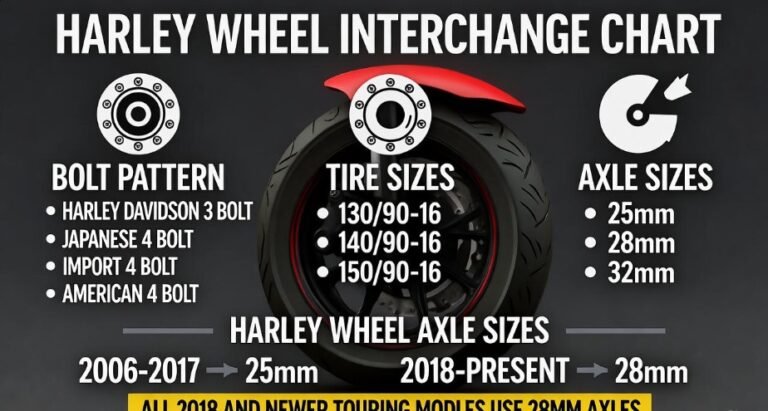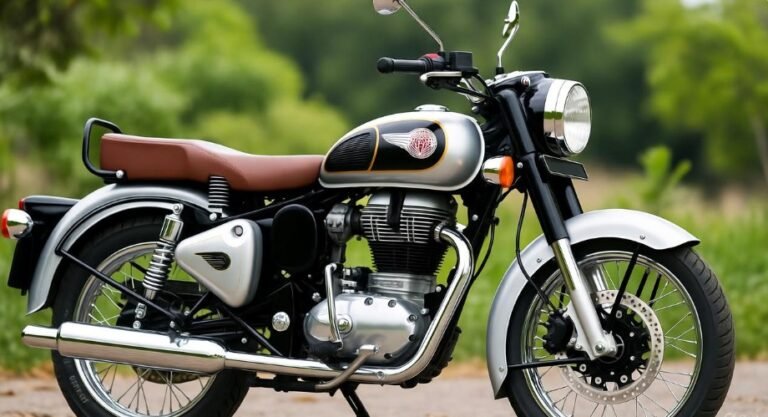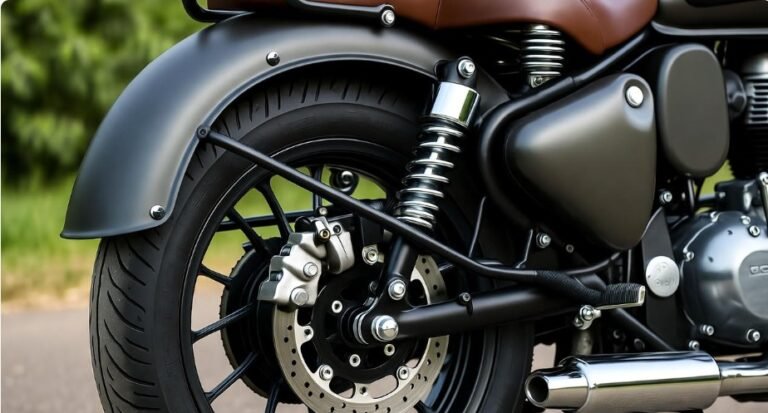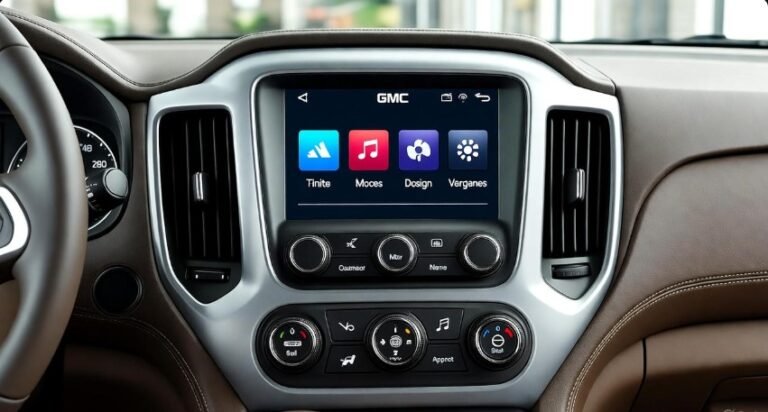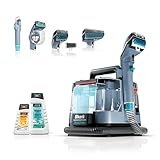Cycle Disc Brake Set Price – Find Deals
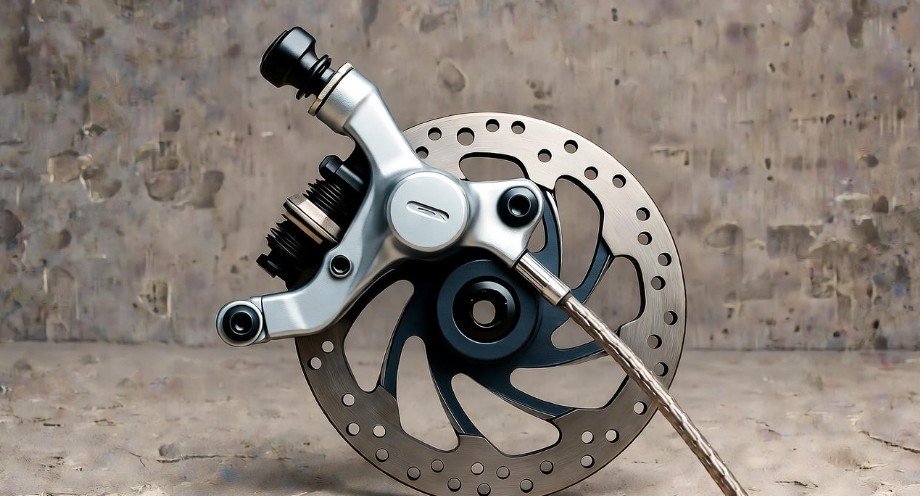
Find the best cycle disc brake set price by comparing options, understanding components, and knowing when to buy. Get reliable stopping power for less!
In This Article
- 1 Understanding Cycle Disc Brake Components
- 2 Types of Cycle Disc Brakes: Hydraulic vs. Mechanical
- 3 Factors Influencing Cycle Disc Brake Set Price
- 4 Finding Deals on Cycle Disc Brake Sets
- 5 Table: Common Disc Brake Set Price Ranges (USD)
- 6 Pro Tips: Getting the Best Value
- 7 What to Consider for Your Bike Type
- 8 Installation and Maintenance Considerations
- 9 FAQ: Your Cycle Disc Brake Set Price Questions Answered
- 10 Conclusion
Key Takeaways
- Compare cycle disc brake set prices across retailers.
- Understand hydraulic vs. mechanical brake differences.
- Factor in rotor size for braking performance.
- Look for bundled deals on brake sets.
- Consider your bike type for brake needs.
- Timing your purchase can yield savings.
Are you looking to upgrade your bike’s stopping power? Finding the right cycle disc brake set price can be a maze. Disc brakes offer superior performance, especially in wet or muddy conditions, but the variety of options can be overwhelming. You want brakes that are safe, reliable, and fit your budget. This guide will break down everything you need to know to find great deals on cycle disc brake sets, from understanding the different types to spotting the best bargains. Let’s make sure you stop on a dime without breaking the bank.
Understanding Cycle Disc Brake Components
Before diving into prices, it’s crucial to understand what makes up a disc brake set for your bicycle. A complete set typically involves several key components, each affecting performance and cost. Knowing these parts will help you make informed decisions when comparing prices and features.
The Rotor: Where the Magic Happens
The rotor is the metal disc that attaches to your wheel hub. When you apply the brakes, the brake pads clamp onto this rotor to slow the wheel. Rotors come in various sizes, measured in millimeters (mm). Common sizes include 160mm, 180mm, and 203mm. Larger rotors generally provide more stopping power and better heat dissipation, which is important for long descents. However, larger rotors also add a bit more weight and can be more susceptible to damage if struck.
When looking at cycle disc brake set prices, the rotor is often included. Pay attention to the material (usually stainless steel) and whether it’s a solid disc or has a more advanced design with cooling fins or cutouts. These features can influence the price.
The Caliper: The Gripping Powerhouse
The caliper is the mechanism that houses the brake pads and clamps them onto the rotor. There are two main types of disc brakes: mechanical and hydraulic. The caliper design differs significantly between these two systems.
- Mechanical Calipers: These use a cable, similar to rim brakes, to actuate a piston or moving arm that pushes the brake pads. They are generally less expensive and easier to maintain, but offer less modulation (fine control over braking force) and require more hand effort.
- Hydraulic Calipers: These use fluid (typically mineral oil or DOT fluid) to transmit force from the brake lever to the caliper pistons. Hydraulic brakes offer superior stopping power, better modulation, and require less effort at the lever. They are more complex and can be more expensive to maintain if a bleed is needed.
The quality of the caliper, the number of pistons (more pistons usually mean more power), and the materials used all contribute to the overall cycle disc brake set price.
The Lever and Hose/Cable: Connecting Power to Grip
The brake lever is what you squeeze to activate the brakes. Like calipers, levers differ between mechanical and hydraulic systems. Hydraulic systems use a hose filled with fluid to connect the lever to the caliper, while mechanical systems use a brake cable and housing.
The ergonomics of the lever, its adjustability, and its construction materials play a role in pricing. Higher-end levers might be lighter, offer more comfortable shapes, and provide finer adjustment options. For hydraulic systems, the length and type of hose (braided or rubber) can also affect the cost.
Types of Cycle Disc Brakes: Hydraulic vs. Mechanical
The choice between hydraulic and mechanical disc brakes is one of the most significant factors influencing cycle disc brake set price and overall performance. Understanding their pros and cons will help you decide which is best for your riding style and budget.
Mechanical Disc Brakes: The Budget-Friendly Option
Mechanical disc brakes are the more affordable entry point into disc braking technology. They offer a noticeable improvement over rim brakes, especially in poor weather, but they don’t quite match the performance of their hydraulic counterparts.
Pros of Mechanical Disc Brakes:
- Lower Price: Generally much cheaper than hydraulic systems.
- Easy Installation and Maintenance: Simple to set up and adjust. Cables can be replaced easily by most home mechanics.
- Durability: Less prone to catastrophic failure from leaks.
- Compatibility: Can often be used with standard road or mountain bike brake levers (though specific levers are recommended).
Cons of Mechanical Disc Brakes:
- Less Power: Require more hand force for equivalent stopping power compared to hydraulics.
- Poorer Modulation: More difficult to achieve fine control over braking.
- Cable Friction: Cables can stretch, corrode, and increase friction over time, reducing performance.
- More Adjustments Needed: Performance can degrade as cables wear.
If you’re on a tight budget or primarily ride in dry conditions and want a simple upgrade, mechanical disc brakes can be a good solution. You’ll find plenty of affordable cycle disc brake set price options here.
Hydraulic Disc Brakes: The Performance Standard
Hydraulic disc brakes are the preferred choice for most serious cyclists due to their superior performance, comfort, and control. The way they work is similar to the brakes in your car.
Pros of Hydraulic Disc Brakes:
- Superior Stopping Power: Require significantly less hand effort for maximum braking.
- Excellent Modulation: Allow for precise control over braking force, enabling smoother deceleration.
- Self-Adjusting Pads: As pads wear, the system automatically compensates, maintaining consistent lever feel.
- Consistent Performance: Less affected by dirt and water ingress compared to cables.
Cons of Hydraulic Disc Brakes:
- Higher Price: Typically more expensive than mechanical systems.
- More Complex Maintenance: Bleeding the system (removing air bubbles and replacing fluid) can be more involved.
- Potential for Leaks: Seals and hoses can fail, leading to fluid loss and loss of braking.
- Specific Levers Required: Need dedicated hydraulic brake levers.
For mountain biking, cyclocross, or any riding where maximum stopping power and control are paramount, hydraulic disc brakes are the way to go. While the initial cycle disc brake set price is higher, many riders find the performance benefits well worth the investment.
Factors Influencing Cycle Disc Brake Set Price
The price of a cycle disc brake set can vary dramatically. Several key factors contribute to these differences, from the brand reputation to the materials used. Understanding these elements will help you justify the cost and find the best value for your money.
Brand and Tier: The Manufacturer’s Reputation
Like most things in cycling, brand plays a significant role in price. Established brands like Shimano and SRAM offer a wide range of disc brake groupsets, from entry-level to professional-grade. Higher-end groupsets from these brands will feature lighter materials, more advanced internal mechanisms, and better overall refinement, commanding a higher cycle disc brake set price.
Lesser-known or house brands might offer lower prices, but it’s important to research their quality and reliability. Sometimes you can find excellent value from these brands, but other times, the cost savings come at the expense of performance or durability.
Materials and Construction: Weight and Durability
The materials used in the levers, calipers, and rotors impact both weight and price. Aluminum is common for levers and calipers, offering a good balance of strength, weight, and cost. Higher-end systems might use more exotic alloys or even carbon fiber for levers to reduce weight further, thereby increasing the cycle disc brake set price.
Rotors can also vary. While most are steel, some feature aluminum carriers to reduce weight. The precision of manufacturing, the quality of seals in hydraulic systems, and the overall build quality all contribute to the durability and feel of the brakes, and thus their price.
Included Components: What’s in the Box?
A “set” can mean different things to different manufacturers. Some sets might include only the levers, calipers, and hoses/cables, requiring you to purchase rotors and adapters separately. Others might be more complete, including rotors, adapters, and even bolts.
Always check what’s included when comparing cycle disc brake set price. Buying a complete package can often be more economical than purchasing individual components. Be aware of what you need for your specific bike frame and fork, as mounting standards and rotor sizes can vary.
Technology and Features: Advanced Braking
Modern disc brakes incorporate various technologies designed to enhance performance. Features like tool-free reach adjustment, free stroke adjustment (how much lever movement before pads engage), and advanced pad materials can add to the cost. For hydraulic systems, the type of fluid used (mineral oil vs. DOT fluid) and the sealing technology also contribute to the overall design and price.
Finding Deals on Cycle Disc Brake Sets
Scouring the market for the best cycle disc brake set price requires a strategic approach. With a little effort, you can find excellent deals that won’t compromise on braking performance.
Compare Prices Online and In-Store
The internet is your best friend when hunting for deals. Many online retailers specialize in bicycle parts and often have competitive pricing. Websites like:
- Jenson USA
- Chain Reaction Cycles
- Wiggle
- REI (often has sales on components)
- Local bike shop websites
Are good starting points. Use price comparison tools or simply open multiple tabs to compare the same products. Don’t forget to factor in shipping costs. Local bike shops can also surprise you with deals, especially on last year’s models or during seasonal sales. Plus, you get the benefit of expert advice.
Look for Bundles and Groupset Integration
Often, purchasing brake sets as part of a larger groupset (e.g., a full drivetrain and brake package) can offer significant savings. Even if you don’t need all the components, the integrated brake set within a discounted groupset might be cheaper than buying it separately. Keep an eye out for “bleed kits” or “adapter kits” that might be bundled for convenience and a better overall cycle disc brake set price.
Shop Off-Season and Clearance Sales
Just like with cars, bicycle components go on sale. The end of the cycling season (late summer/fall) is often a prime time for shops to clear out old inventory. Bicycle manufacturers also release new models annually, meaning last year’s versions become clearance items. Look for “closeout” or “sale” sections on retailer websites.
Consider Used or Refurbished Components
For the truly bargain-conscious, the used market can be a goldmine. Websites like eBay, Pinkbike’s Buy/Sell forum, or even local cycling forums often have riders selling components they’ve upgraded. Be cautious and inspect used items carefully, especially hydraulic brake lines for any signs of damage or leaks. Refurbished items from reputable dealers can also offer significant savings with a warranty.
Sign Up for Newsletters and Follow Brands on Social Media
Many online retailers and brands offer exclusive discounts to their email subscribers. Signing up for newsletters ensures you’re among the first to know about flash sales, special promotions, and new product releases that might come with introductory offers. Following brands on social media can also lead to discovering limited-time deals.
Table: Common Disc Brake Set Price Ranges (USD)
This table provides a general idea of what you might expect to pay for different types of disc brake sets. Prices can fluctuate significantly based on sales, brands, and specific models.
| Brake Type | Typical Price Range (Front & Rear Set) | Key Features & Considerations |
|---|---|---|
| Mechanical Disc Brake Set | $50 – $150 | Cable-actuated. Simpler, more affordable. Good for entry-level or casual riding. Less power and modulation than hydraulic. Usually includes calipers, levers, and cables/housing. Rotors often sold separately. |
| Entry-Level Hydraulic Disc Brake Set | $100 – $250 | Fluid-actuated. Better power and modulation. Requires hydraulic levers, calipers, and hoses. Often includes rotors. Simpler hydraulic systems. Good for recreational trail riding or gravel bikes. |
| Mid-Range Hydraulic Disc Brake Set | $200 – $400 | Improved power, modulation, and heat management. Often 2-piston or entry-level 4-piston calipers. Lighter materials. Better lever feel. Ideal for aggressive trail riding, cross-country, or all-road. |
| High-End Hydraulic Disc Brake Set | $400+ | Top-tier performance, lightweight construction (e.g., carbon levers). Powerful 4-piston calipers common. Advanced features like tool-free adjustments. Designed for demanding downhill, enduro, or competitive racing. Significant investment. |
Note: Prices are approximate and do not include installation costs. Always check specific product details for included components.
Pro Tips: Getting the Best Value
Pro Tip: When buying hydraulic disc brakes, ensure the included hose length is sufficient for your bike’s frame and lever/caliper positions. You can often buy longer hoses if needed, but it’s an extra cost.
What to Consider for Your Bike Type
The “best” cycle disc brake set price depends heavily on the type of bicycle you ride and your intended use. A downhill mountain bike has different braking needs than a commuter road bike.
Mountain Bikes (MTB)
Mountain bikes, especially those used for aggressive trail riding, enduro, or downhill, benefit immensely from powerful, well-modulated hydraulic disc brakes. Larger rotors (180mm, 203mm) are common to handle the heat generated on long descents and provide maximum stopping force. For these applications, a mid-range or high-end hydraulic set is often recommended. While the cycle disc brake set price might be higher, the safety and control gained are invaluable.
Road Bikes and Gravel Bikes
Road bikes and gravel bikes have increasingly adopted disc brakes for their all-weather performance. For road cycling, lighter-weight hydraulic disc brakes (often with 2-piston calipers and 160mm rotors) are popular, offering improved stopping power over rim brakes without a significant weight penalty. Gravel bikes often use similar setups, sometimes opting for slightly larger rotors or more robust calipers for off-road excursions.
Commuter and Hybrid Bikes
For commuting and general hybrid bike use, mechanical disc brakes can be a very cost-effective and reliable choice. They offer better performance than basic rim brakes, especially in rain, and are simpler to maintain. If your budget allows, an entry-level hydraulic set provides a noticeable upgrade in performance and lever feel, making those stop-start commutes more comfortable. A good cycle disc brake set price in this category offers a balance of durability and function.
Installation and Maintenance Considerations
Even the best cycle disc brake set price won’t matter if the brakes aren’t installed correctly or maintained properly. Understanding these aspects can save you money and frustration in the long run.
DIY Installation vs. Professional
Mechanical Disc Brakes: Installation is relatively straightforward for those with basic mechanical aptitude. You’ll need Allen wrenches, cable cutters, and possibly a torque wrench. Many online tutorials are available.
Hydraulic Disc Brakes: Installation is more complex. It involves mounting levers, calipers, and hoses, and then bleeding the system to remove air. If you’re not comfortable with this process, it’s highly recommended to have a professional bike shop install them. The cost of professional installation can add $50-$150, so factor this into your total cycle disc brake set price.
A valuable resource for understanding bicycle maintenance is Park Tool’s Repair Help section, which offers detailed guides and videos on a wide range of bicycle repairs, including disc brake service.
Brake Bleeding and Pad Replacement
Brake Pads: Disc brake pads wear out over time and need to be replaced. This is a relatively simple DIY task for both mechanical and hydraulic brakes. You’ll typically need to remove the wheel and then unbolt or release the old pads. New pads can cost from $15 to $50+ per set, depending on the compound (resin, metallic, semi-metallic).
Brake Bleeding (Hydraulic): Hydraulic systems need to be bled periodically (every 6-12 months, or when the lever feels soft) to ensure optimal performance. This involves using a special kit and fluid specific to your brake system (Shimano uses mineral oil, while SRAM often uses DOT fluid). If you’re not sure how to do this, a bike shop can perform a bleed for a fee.
FAQ: Your Cycle Disc Brake Set Price Questions Answered
Q1: What is the cheapest way to get disc brakes on my bike?
A1: The most budget-friendly option is usually a set of mechanical disc brakes. Look for deals on entry-level brands or consider used components if you’re comfortable with that route.
Q2: Do I need new levers if I switch from rim brakes to disc brakes?
A2: Yes. Mechanical disc brakes can sometimes work with standard brake levers, but they are designed for them. Hydraulic disc brakes absolutely require dedicated hydraulic brake levers.
Q3: How often do disc brake pads need replacing?
A3: This depends heavily on riding conditions and style, but typically every 1,000-3,000 miles for road riding, and much less for mountain biking, especially in wet or muddy conditions. Visually inspect them regularly.
Q4: What is a “brake bleed kit,” and do I need one?
A4: A brake bleed kit is a set of tools and syringes used to service hydraulic disc brakes. You’ll need it if you plan to bleed your hydraulic brakes yourself. They are specific to brake fluid types (DOT or mineral oil).
Q5: Are expensive disc brakes really worth the extra money?
A5: For performance riders, yes. Higher-end brakes offer better power, modulation, heat management, and lighter weight. For casual riders, a good mid-range or even entry-level set will provide satisfying performance gains.
Q6: Can I mix and match brands for disc brake components?
A6: You can often mix rotors and calipers from different brands, but it’s generally best to keep levers and calipers from the same system (especially for hydraulic brakes) for compatibility and optimal performance. Always research compatibility before mixing.
Conclusion
Finding the right cycle disc brake set price is achievable with a bit of research and understanding. Whether you opt for the simplicity and affordability of mechanical disc brakes or the superior performance of hydraulic systems, there are options to suit every rider and budget. By comparing prices online and in-store, looking for bundles, shopping sales, and considering your bike’s intended use, you can equip your bicycle with reliable stopping power without overspending. Remember that installation and ongoing maintenance are also key factors in ensuring your new brakes perform optimally for years to come.


